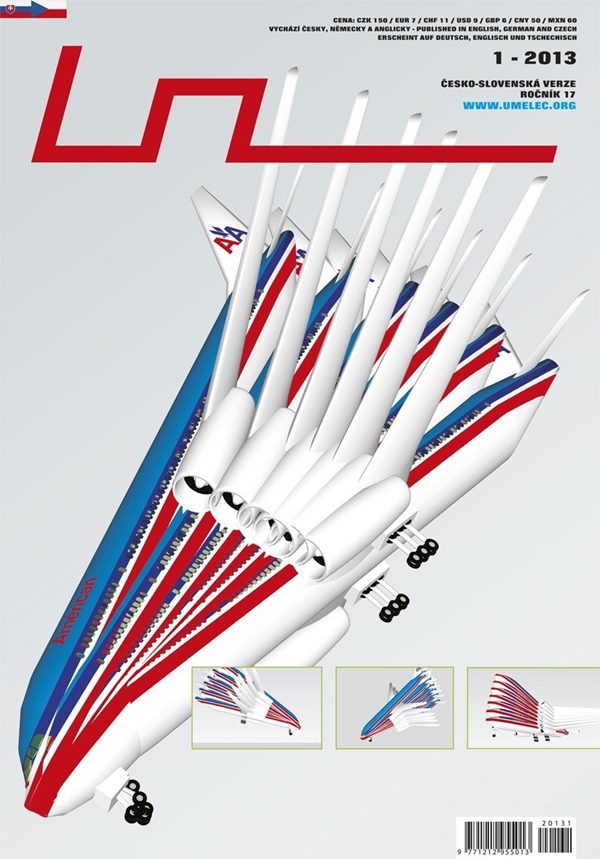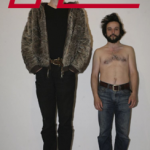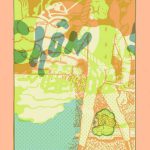Umělec 2013/1
6,50 € VAT included
Only 2 left in stock
129 pages, 22.10 x 31.90cm, soft cover, full colour, Czech/Slovak and English language.
Umelec Magazine since 1997 is the only art magazine devoted to current visual culture in the Czech Republic. It is directed to the international scene, particularly the wider European circle. Its emphasis on art in Central and Eastern Europe stems from its unique position in that region.
An Environment of Unnecessary Culture
Palo Fabuš (editorial, p. 1)
How else should culture defend itself but according to its own rules – which today are foreign to the state?
The Nigerian Connection: On NSK Passports as Escape and Entry Vehicles
Inke Arns (Africa, p. 4–9)
NSK is a state without borders and without space, located exclusively in time – which hasn’t discouraged aspiring immigrants from trying to acquire one of its passport. German curator Inke Arns set out for Nigeria in order to explain to applicants the nature of this art project. Did she succeed? Hard to say.
T. D. (The Monogramist’s Monograph)
Jan Wollner (critique, p. 10–17)
When an artistic monograph is published, most of the time the outcome is pretty bad – cliché bordering on kitsch, and no courage to try something different. But a monograph on an artist of Slovakia’s middle generation shows that a healthy dose of confidence can result in a beautiful book whose faith in form remains in step with the artist’s respected work.
The ETA
Octavian Esanu (story, p. 18–21)
One day, patents began to be issued for various letters of the alphabet. Lawsuits and international accords between governments and multinational corporations divided language into words and letters. Monthly billing was introduced for the use of the various letters in the form of phonetic tariffs. Those who couldn’t afford it ended up on the periphery of the alphabet.
Mein Folk Costume
Martin Dušek (folklore, p. 22–25)
An anti-German folkloric provocation by a mysterious Czech filmmaker dressed as a Czech Romantic motorcycle at a Germanic nationalist gathering.
Gerhard Richter is Crap
Spunk Seipel (critique, p. 26–27)
Of course, we all (including you readers) have known this for a long time, but Spunk Seipel always says it best. As always: exciting reading about crap. Too bad that nobody will be reading it in German – since Germany doesn’t need our help anywhere, we have stopped publishing Umělec in German. At the advice of our current president and his predecessor, we are preparing a Russian edition instead.
Good Bye, Bruce Lee
Mark Ferelli (film and sport, p. 28–31)
It’s a well-established cliché that a well-timed (and, even better, tragic) death can transform mere fame into full-fledged legend. But in the case of Bruce Lee, this cliché may just reach the limits of its definition. The vivisection of the image of his well-built body, stylized movements and cool elegance would appear to have become so wound up in itself that he has merged completely with the lives of the people who surrounded him.
Pavla is a Mutant
Palo Fabuš (profile, p. 32–35)
In her work, Slovak artist Pavla Sceranková recycles the metaphysics of childhood by creating “headstrong” objects. In placing well-kept furniture, lamps and mechanical constructions before adult eyes, she forces them to again and for the first time aspire for a higher childhood.
Mind without Image
Pavla Sceranková (artists unto themselves, p. 36–37)
Selected meditations on the art of one of the most interesting Slovak artists today.
An Exercise in Fatality
Amanda Beech (America, p. 38–41)
The world in which Inspector Columbo solved criminal mysteries is not what it appears to be. British artist Amanda Beech returns to the popular television series to reconstruct the political weightlessness and unusual normativeness that lurk in the gaps in the inspector’s biography.
Automatons, Bugs, and a Vibrator
Dita Malečková (technology, p. 42–45)
By the time we see bugs crawling across our desks and the first thing that comes to mind is sex, we will be looking back nostalgically at the works of philosopher Gilles Deleuze and media theorists Jussi Parikka and Luciana Parisi. But for now, “abstract sex” may be the kind of future that we are already living today.
BEWEGUNG NURR
(answers, p. 46-51)
“For Malevich, the ‘Black Square’ would seem to have been more basis and manual; whereas for us the white square in FORM has become a superficial view into emptiness piercing through the absent individual. You have to dress warmly for the flight into nothingness.”
Degree Show Proposals 2010
Beth Fox (art project, p. 52-57)
Some artistic ideas remain forever on paper. They will always be better than the best that we have tried to actually create.
Still life Wehlemann-Nowotecki
S.d.Ch. (theater, p. 58-65)
At the Café Slovan, the FRIEND OF THE ANONYMOUS ARTIST is endlessly ordering dark German things, while the ANONYMOUS ARTIST takes on the entire Czech artistic and non-artistic world in a stirring monologue about the artists Wehlemann and Nowotecki, as quoted from the lips of an absent clown. A light bulb bursts and Schumann is played: That is the only action in this exceptionally dramatic text by S.d.Ch., born from the paradigm of deconstruction and envisioned as a theatrical still-life beneath the Cubist painting Pasture.
Cyberspace Anarchitecture as Jungle-War
Nick Land (philosophy, p. 66-73)
”Nuclear extermination-switch discretised civilization runs through gigadeath Jesus-dreams in base-analytic metric numbers: segregating the semiotics of digit definition from the semantics of numerical construction, delinking digitisability from computability, nomination from numeration. The Empire insists that mathematics remain a language. Parametric striation totalises space under law.”
Origins of the Cthulhu Club
Nick Land (philosophy, p. 74-75)
”Here in Massachusetts we have been convening a small Lovecraft reading-group, dedicated to exploring the intersection between the Nma cultural constellation, Cthulhoid contagion, and twisted time-systems. We are interested in fiction only insofar as it is simultaneously hyperstition – a term we have coined for semiotic productions that make themselves real – cryptic communications from the Old Ones, signaling return: shleth hud dopesh.”
Jesus Rebooted, Jesus Freebooted: David W. Thompson’s Apocalyptic Evangelical Cinema
Mark Bould (film, p. 76-79)
An analysis of an American phenomenon and movie genre that shuns the rest of the world. Movies on which companies and people have spent tons of money, but that still remain on the margins of public interest. Christian thrillers inspired by the New Testament, made by fundamentalist Christians for fundamentalist Christians.
Bad Brain Call: Dialogical Pop
Annabel Frearson (art project, p. 80-83)
A musical recording as a mathematical-electronic-linguistic game with Frankenstein.
A Deconstruction of the American Rural House (A Change in Form on the Brink of Catastrophe)
Borjana Dodová (America, p. 84-89)
What would a house look like whose “house-ness” – i.e., a certain distanced from nature – is suppressed as much as possible in favor of being in harmony with the natural environment? Could anyone build it himself, or would it be condemned to remain in the dreaming minds of select architects? What chance would they have face to face with an approaching catastrophe? In the end, isn’t the search for a non-house merely a symptom of our anxiety in an incomprehensibly changing world?
Artists in Line for Collective Security
Palo Fabuš (critique, p. 90-97)
When initiatives like the Czech Declaration against a Zero Wage set out in more or less the same direction in order to improve market fairness for artists, their proclamations unconsciously answer far more important questions than the ones that they pose explicitly. A critical reading between the lines reveals an unflattering definition of the artist today.
The Noble Cowboy
Guillermo Núñez (bad taste, p. 98-107)
Many, many years ago, Mexico was inhabited only by cowboys, blondes, and Indians. Elegant bad guys with graying temples oscillated between good and evil. Then today’s Mexicans came and killed them all or drove them out. Later, they regretted it and started to write and draw their stories, or they painted icons of these historical heroes. It is all that has remained…
Black Ball
Gustav Meyrink (story, p. 108-109)
This short story is always re-published by a publisher selected in a secret lottery during periods in human history when the wave of human idiocy threatens to turn into a worldwide tsunami. Found by Meyrink while on a walk along the dried-out Nile, the story is always updated to reflect current circumstances and the elites who momentarily find themselves riding the crest of the wave. Today, the soldier can be replaced by an economist or lawyer.
The Players: Pat and Mat
Ivars Gravlejs (art project, p. 110-119)
The two characters from the popular Czechoslovak stop-motion animated series are known for their combination of perseverance and ineptitude. But how is this perseverance and ineptitude seen through the eyes of someone from the world of art? Would we be surprised to find them offered a booth at the Vienna Fair? And what would Giancarlo Politi have to say about it?
Vít Soukup (comics, p. 120–128)
Post-ironical meta-humoristic amero-european light vintage comics.














